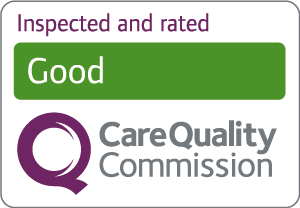
Party season and Bunions: tips from an Orthopaedic Consultant
With the festivities upon us, both men and women can’t wait to wear their Christmassy outfits, including fancy boots, stilettos and dancing shoes. Mr Martin Klinke, Consultant Foot & Ankle Surgeon at New Victoria Hospital, provides some tips on foot pain and bunions and how to survive the party season by preserving your feet.
Are high heels and wrong footwear the cause of toe deformities?
Forefoot pain is a problem that often becomes more apparent during the colder time of the year. We tend to wear closed shoes, and especially women will be tempted to wear shoes with a higher heel and a narrower toe box. Even a small deformity of a toe can cause pain in certain footwear.
High heels and unsupportive flat shoes like ballerinas are most likely not the main cause of developing a bunion.
However, they often aggravate the symptoms and can eventually lead to an overload of the lesser toes, especially of the second toe joint.
What are bunions?
Bunions are painful bumps at the joint of the big toe and occur when the big toe is leaning too much inwards towards the lesser toes.
This is caused by a various factors, from ill-fitting shoes to genetics. Bunions can also be associated with conditions, such as flat feet, tight calf muscles and hypermobility.
A bunion can also affect our biomechanics, how we stand, walk and use our feet whilst being active. Even though women are a lot more often affected, men often present with a more severe deformity and have problems finding comfortable footwear.
What are the common symptoms?
Due to the deformity of the big toe, the bone becomes very prominent, and this part of the foot is therefore exposed to pressure from footwear.
The constant pressure can cause:
- soft tissue irritation
- swelling
- pain
- redness
- inflammation
The pain can radiate to other parts of the foot and can cause further problems in the foot.
The big toe not only deviates towards the lesser toes but often starts to rotate (pronation of the big toe), which means that the big toe does not support the foot well when pushing off through the forefoot.
At times the deformity can become so severe that people cannot find any comfortable footwear to get around.
Diagnosing bunions
An experienced orthopaedic surgeon with a special interest in foot and ankle problems will be able to diagnose a bunion based on the history and a thorough examination of the lower limbs and, of course, of both feet.
Bunions can also be associated with other problems in your foot, e.g. hammer toes, inflammation in lesser toe joints, arthritic changes of some joints or nerve irritations.
Further investigations might be necessary, but often a plain weight-bearing x-ray will be helpful to get the relevant information about the big toe, the position of the bones and to check if there are arthritic changes in the forefoot. Sometimes an ultrasound scan or even an MRI scan will be indicated to rule out other problems in the foot.
There may also be further tests to rule out other medical conditions such as inflammatory arthropathy like rheumatoid arthritis.
Treatment and prevention
Not all bunions cause problems, and some simple, non-invasive options can alleviate the symptoms.
Of course, footwear is important and wearing wide-fitting shoes will reduce the pressure on the big toe and might prevent a further deterioration of the deformity.
Silicone toe spacers and soft felt bunion pads might also alleviate symptoms but only surgery will correct any deformity. On the other hand, surgery is only indicated when patients have problems with the big toe.
Treating symptomatic bunions is important. If left untreated, it is extremely likely that symptoms will only get worse and the lesser toes can start to cause pain. There is a risk of developing pain in the pad of the forefoot and hammer toe deformities.
Initially and whenever possible, you should try non-invasive treatments. Orthotics to support the medial longitudinal arch can help, especially when there is a tendency for a flat foot deformity. On the other hand, wearing high heels will only exasperate the condition.
In those cases where the bunions are taking a toll on your quality of life and all other treatments have been exhausted, then a foot and ankle surgery is a final solution.
Surgery is the only way to correct the alignment of a bunion by straightening the bones of the big toe and tightening up the stretched soft tissues.
What does bunion surgery involve?
Of those over 130 different types of bunion surgery techniques described in the literature, only a few types of operations are nowadays successfully used to help straighten the big toe and get rid of the pain.
The choice of the operation will depend on various factors, but one has to always cut the bones, reset them in the correct position and fix them with small screws. This can be achieved with an open or minimally invasive technique. The surgeon will explain why one operation might suit better than another type of operation. There does not seem to be a real difference in the success rate of these commonly used techniques, what is more important is that the surgeon has sufficient experience and understands the patient’s problems and especially their wishes and expectations.
Recovery after surgery
The post-operative care is very similar for all the operations. You need to take it very easy for the first 2 weeks after the operation to keep the foot/feet elevated as much as possible, but you are allowed to walk fully weight-bearing in a post-op shoe from day one.
After 2 weeks, you can increase a little bit walking indoors, and after 6 weeks the bones have healed, which means they can start walking around in wide-fitting normal footwear. Physiotherapy is indicated to start after 2 weeks and should continue until full recovery which is achieved at about 3 months after the operation.
Bunion surgery is one of the most successful operations in the hand of an experienced orthopaedic surgeon with a special interest in foot and ankle problems.
Tips to prevent and manage bunions
Although shoes are not the root cause of bunions, they can often worsen symptoms.
- Wear wide-toe box shoes
- Limit the use of high heels
- Choose low heels over ballerinas
- Don’t ignore symptoms
If you are experiencing foot pain, Foot and Ankle Surgeons at New Victoria Hospital can help with their expert advice. To book an appointment, you can call us on 020 8949 9020 or fill in our online form.












